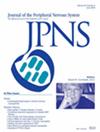Management of Guillain–Barré syndrome in Bangladesh: Clinical practice, limitations and recommendations for low- and middle-income countries
Abstract
Background and Aims
Considerable variation in clinical practice for management of Guillain-Barré syndrome (GBS) has been observed worldwide. Diagnosis and treatment are challenging in low- and middle-income countries (LMIC) due to lack of facilities and treatment availability. We aimed to evaluate current clinical practice and limitations and to provide recommendation for GBS management in low-resource settings.
Methods
We conducted an explanatory-sequential mixed-methods survey among neurologists and internists working in tertiary and secondary government hospitals in Bangladesh. There were two phases: (1) quantitative (cross-sectional survey to evaluate clinical practice and limitations); (2) qualitative (key informant interview to explain certain clinical practice and provide recommendations for GBS management in LMIC). Data were analyzed by frequencies, χ2 test and thematic analysis.
Results
Among 159 physicians (65 neurologists and 94 internists), 11% and 8% physicians used Brighton and NINDS criteria respectively to diagnose GBS. Specific treatment protocols of GBS were used by 12% physicians. Overcrowding of patients, inadequate diagnostic facilities, high costs of standard therapy, and inadequate logistics and trained personnel for intensive care unit and rehabilitation services were considered major challenges for GBS management. In qualitative part, respondents recommended regular training for the physicians, development of cost-effective treatment strategies and appropriate patients' referral and management guideline considering existing limitations in health service delivery and socio-economic status of the country.
Interpretation
Current study design and recommendations might be applied for other LMIC. Such data can assist policymakers to identify areas requiring urgent attention and take required action to improve GBS management in LMIC.

 求助内容:
求助内容: 应助结果提醒方式:
应助结果提醒方式:


